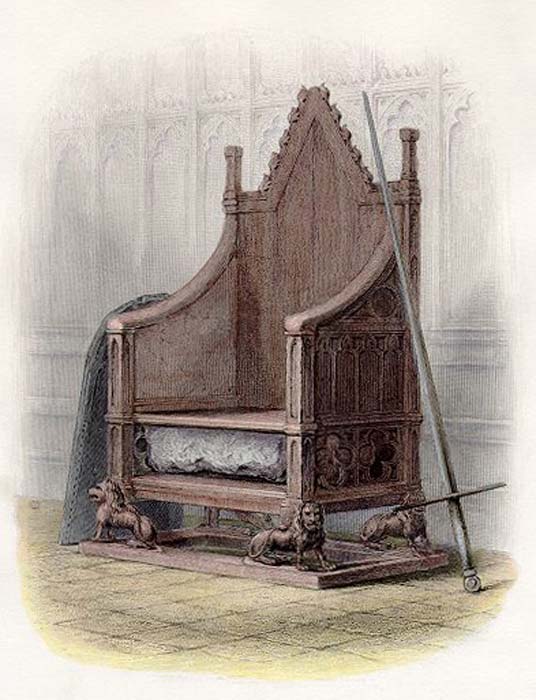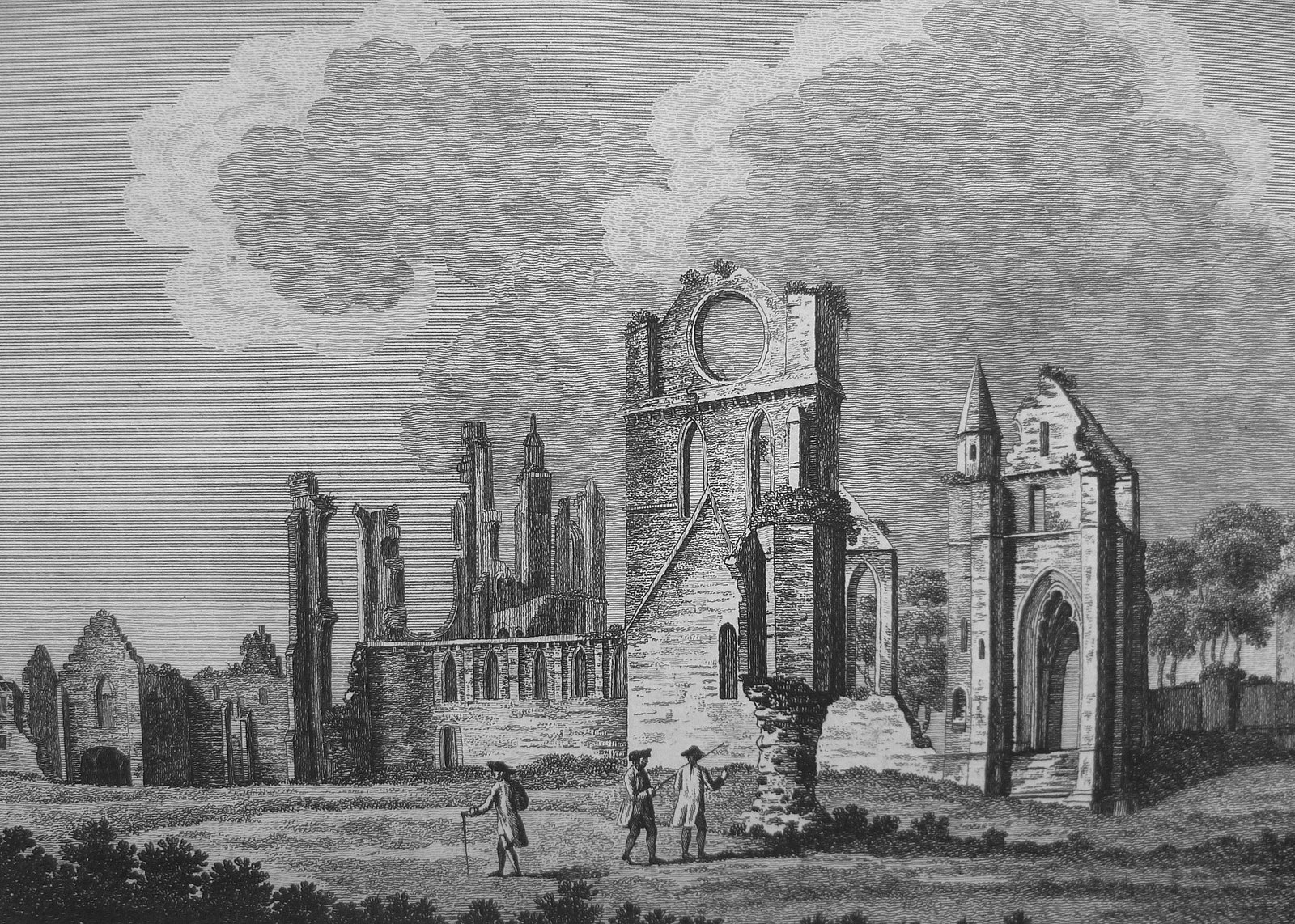
The Stone of Scone in Westminster Abbey
Last week’s passing of the cultural and political icon, Queen Elizabeth II, marks the end of an era, as well as the beginning of a new reign for her son, King Charles III. While the King’s coronation is a long way off (likely to take place in 2023), preparations for the events are already underway. Centuries-old traditions are being planned to punctuate the big day, including the assemblage of one of the globe’s most exclusive guest lists. And the most important guest on that list is an enormous slab of rock. Not to be confused with The Rock, the Stone of Scone is an ancient Scottish artifact. And it is what it sounds like – a large, grey stone – and its presence at the coronation is nearly as essential as His Majesty’s.

Edward Longshanks (portrayed in Braveheart). Copyright: 20th Century Fox Film Corp
Originally used as a throne by the ancient Scots to crown their rulers, the Stone was stolen by King Edward I during the Scottish Wars of Independence in the late 13th century. In stealing the Stone, King Edward sought to send a message to the Scots by establishing himself as their rightful monarch. Unbeknownst to Edward, the Scottish people did not intend for such pillaging to go unpunished, even if the retaliation did not take place until centuries in the future.
In 1950, four unlikely heroes – a motley group of students, led by ringleader Ian Hamilton – snatched the Stone from its place in the Chapel in Westminster Abbey. The quartet then literally carted the antiquity back to Scotland in not one – but two (more on that below) – Ford Anglias. The heist – though ultimately successful – did not occur without a hitch (hence, the two Fords). During the dislodging of the Stone from King Edward’s Chair in King Edward’s tomb, the Stone somehow slipped and smashed to the floor, breaking into two pieces. Not to be deterred, the foursome quickly bundled up the Stone in two packages. One piece was placed in Ford #1, which set off for home. The second piece was tucked into the trunk of Ford #2, driven by our ringleader, Hamilton.
Unfortunately for Hamilton, the night’s struggles were not quite complete, and as dawn broke over the horizon, a policeman approached the car, curious as to why two students were quickly and nervously dashing away from the Abbey at 5am. Hamilton and his fellow passenger jumped into a feigned lover’s embrace, and, after swapping a few innuendos with the policeman, were sent happily on their way.
 This resolved the exit part of the theft, yet left unresolved the issue with the Stone being smashed into two pieces. Upon arrival in Scotland, the Stone received some TLC and a professional mending by a stonemason, who, in addition to doing fantastic masonry, was also phenomenal at keeping secrets. The mason fixed the Stone and breathed not a word to the authorities. But several months later, police received a call about the whereabouts of the Stone: it had been deposited in the Arbroath Abbey in Scotland. This is where the Stone remained until 1952, when it was returned to Westminster Abbey in England.
This resolved the exit part of the theft, yet left unresolved the issue with the Stone being smashed into two pieces. Upon arrival in Scotland, the Stone received some TLC and a professional mending by a stonemason, who, in addition to doing fantastic masonry, was also phenomenal at keeping secrets. The mason fixed the Stone and breathed not a word to the authorities. But several months later, police received a call about the whereabouts of the Stone: it had been deposited in the Arbroath Abbey in Scotland. This is where the Stone remained until 1952, when it was returned to Westminster Abbey in England.
And what about our “bravehearted” student thieves? They were eventually questioned by the authorities, leading Hamilton to confess the entire episode. However, none of the students faced prosecution for their theft, due to the incredible political implications of the heist and the ensuing renewed vigor for Scottish nationalism and devolution efforts.
The 1950 theft became both infamous and synonymous with a separate and distinct Scottish identity, as essentially a testament in itself to the history of independent Scottish reign. In fact, the theft became so closely associated with Scottish independence that England’s return of the Stone to Scotland in 1996 is believed to have been a catalyst for the vote for Scottish devolution in 1997.
Today, the Stone remains in Scotland and travels to England only for the coronation of a new British monarch. As the Stone comes back into the global zeitgeist due to the preparations for England’s crowning of a new King, the Stone’s cultural, political, and historical significance cannot be overlooked. The Stone – and its rare journey between the two Abbeys – encompasses the history of the Scottish monarchy, the legitimacy of British rule, the enduring spirit of Scottish cultural identity, and the undercurrent of thievery and war.
Our thoughts are with the Royal Family and all citizens of the United Kingdom during this time of mourning.